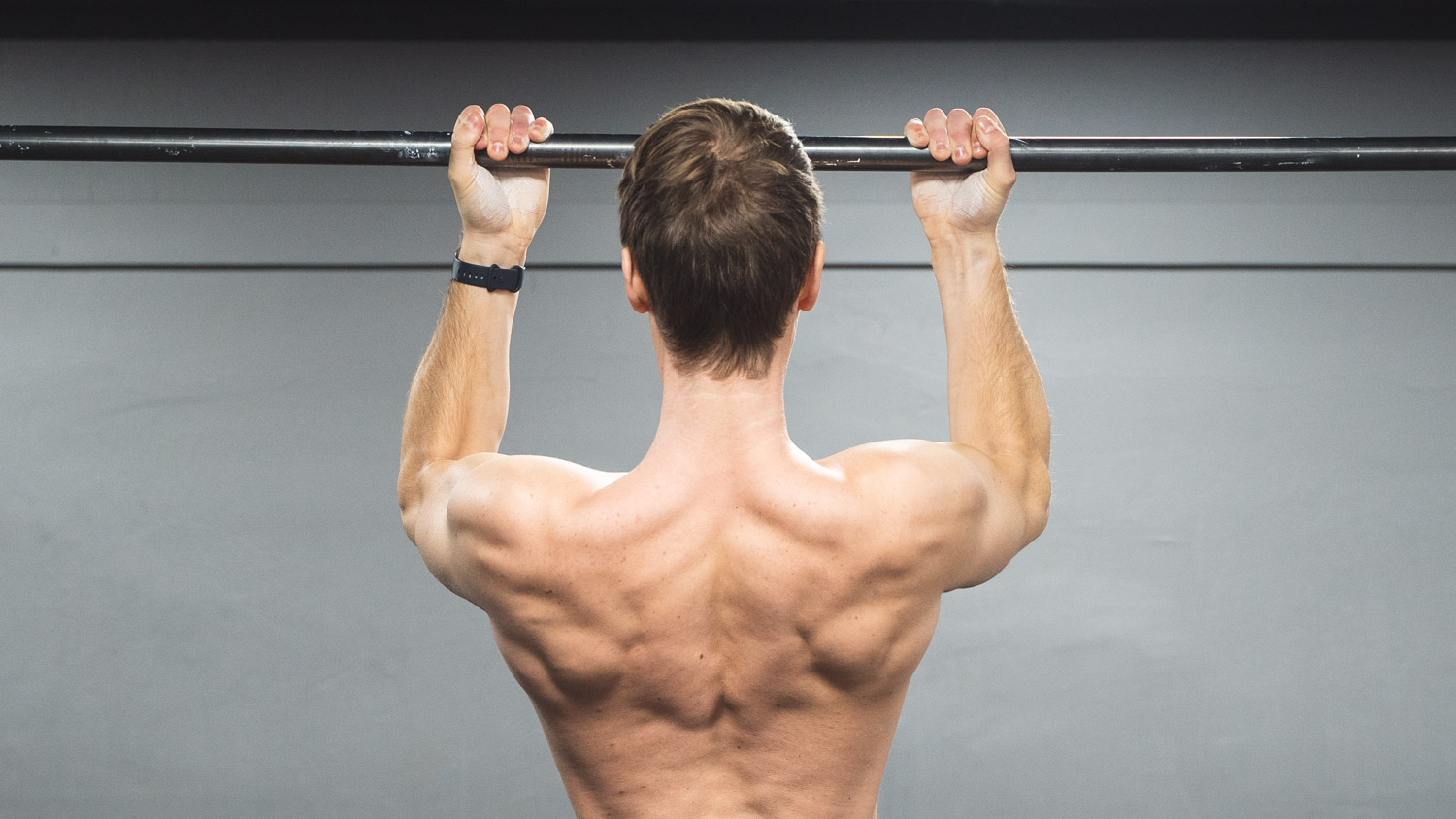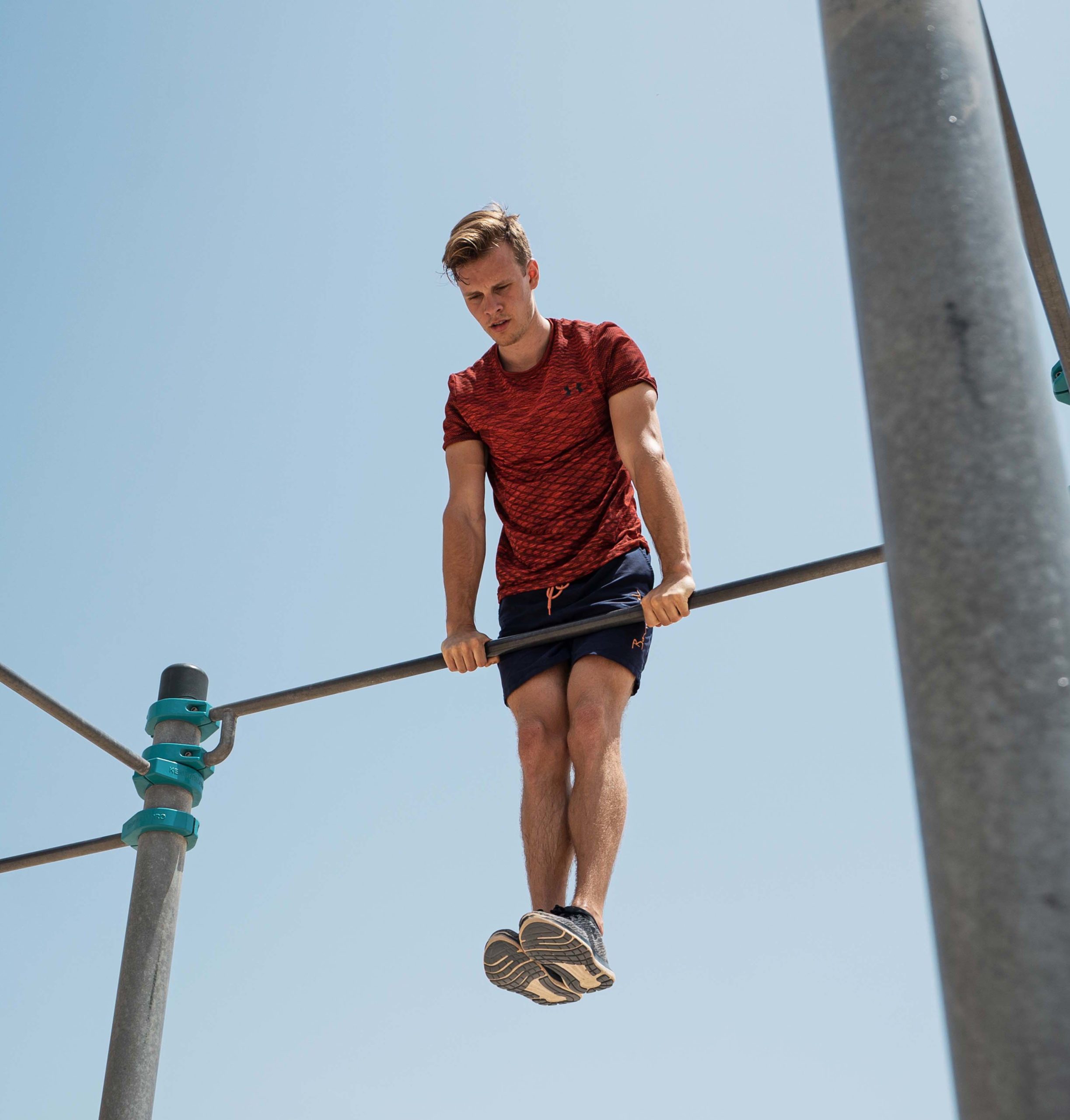Chin ups (also called supine pull ups) are a really good exercise to include in your workouts! You build strength in the back, biceps and forearms while you learn to manage your own body weight. In Calisthenics, it is a basic bodyweight exercise that also makes you stronger in other pull exercises within Calisthenics.
It can feel nearly impossible to learn the chin-ups when starting out. However, with the help of various exercises and continous training it's very possible to master the exercise even if it takes some more work from some people. One thing is sure, the joy is total when you manage to perfom your first! In this blog post we will go through all you will need to know about chin-ups and how to progress further.
What is the difference between Chin Ups vs Pull Ups?
Chin ups and pull ups are basically very similar. Both are bodyweight exercises where you hang in a horizontal bar and pull yourself up with your chest to the bar. What separates chin up from pull up is the grip. In English, the exercise is called chin ups when you have your palms facing you (supinated grip) and pull ups when you have your palms facing away from you (pronated grip). In a chin up, the hands are placed shoulder-width apart on the bar and in a pull-up, the hands are placed wider. This definition is most often used in Calisthenics and we therefore use it at Trainics.
It is not impossible that you have ever been confused by the names of the exercises. In Sweden, for example, pull ups are sometimes called chins or chin ups and the movement with supinated grip (chin ups) is sometimes called "inverted chins" or "supinated chins".
Pull ups (pronated grip)
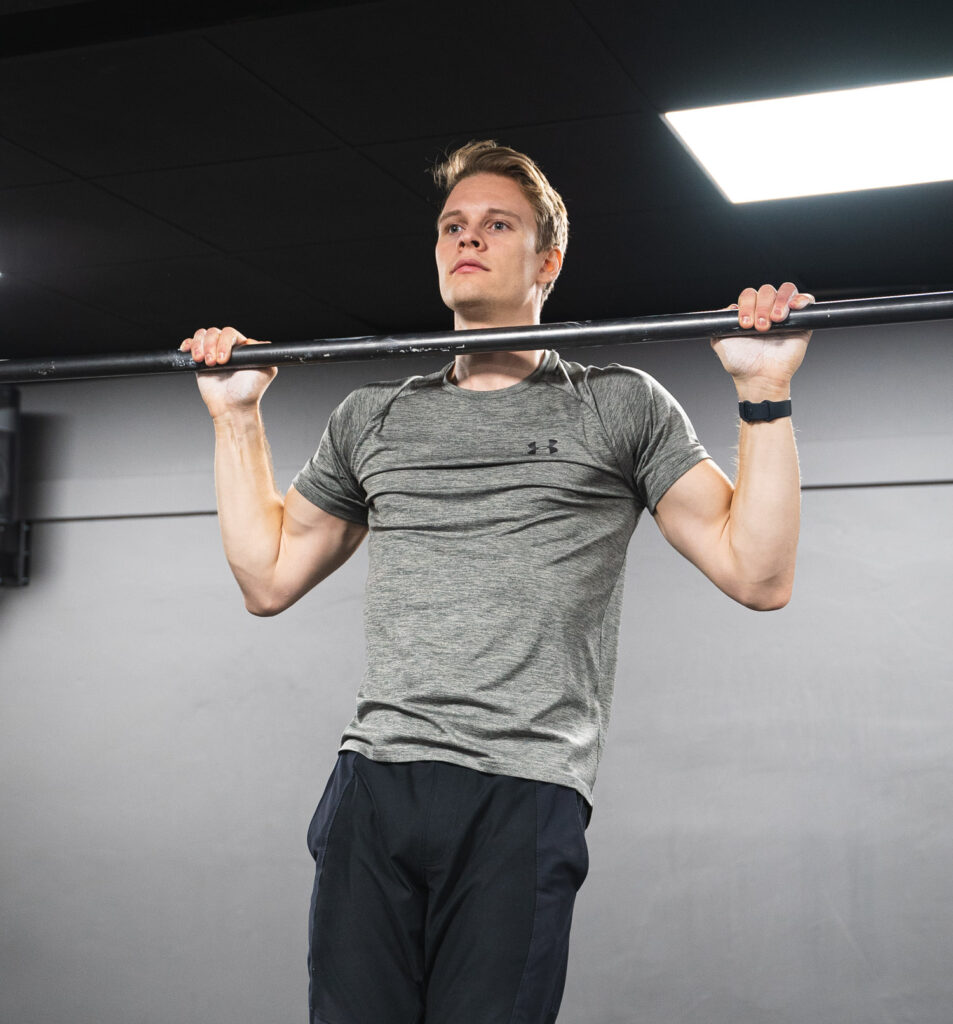
Chin Ups (supinated grip)
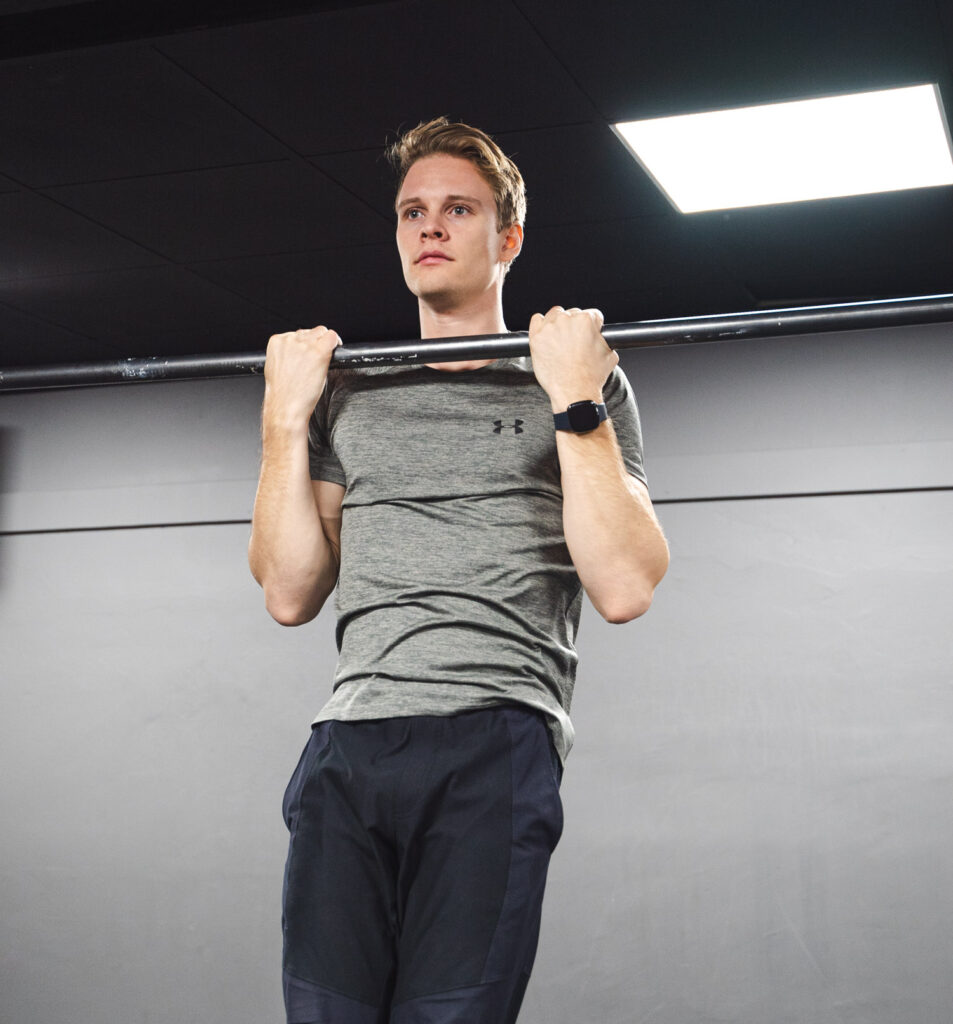
Regardless of whether you have a pronated grip, supinated grip or neutral grip, more or less the same muscles are involved - mainly lats. The difference is that biceps are activated slightly more in chin ups than in pull ups. This is because the biceps is a stronger elbow flexor when the forearm is in supination (chin up). By pronating the forearm (pull up) the biceps is put into a mechanical disadvantage. In pull ups, on the other hand, Brachialis is stronger at doing flexion in the elbow joint.
In summary, it can be said that chin ups activate the biceps a little more while pull ups activate the muscles around the shoulder blades a little more. It is important to remember that both exercises mainly train the large and wide muscle of the back Latissimus Dorsi also called lats. With that said, one exercise is not better than the other. We recommend training both chin ups, pull ups and also with a neutral grip to be strong in many different situations and build a good foundation for other Calisthenics movements.
Supinated grip
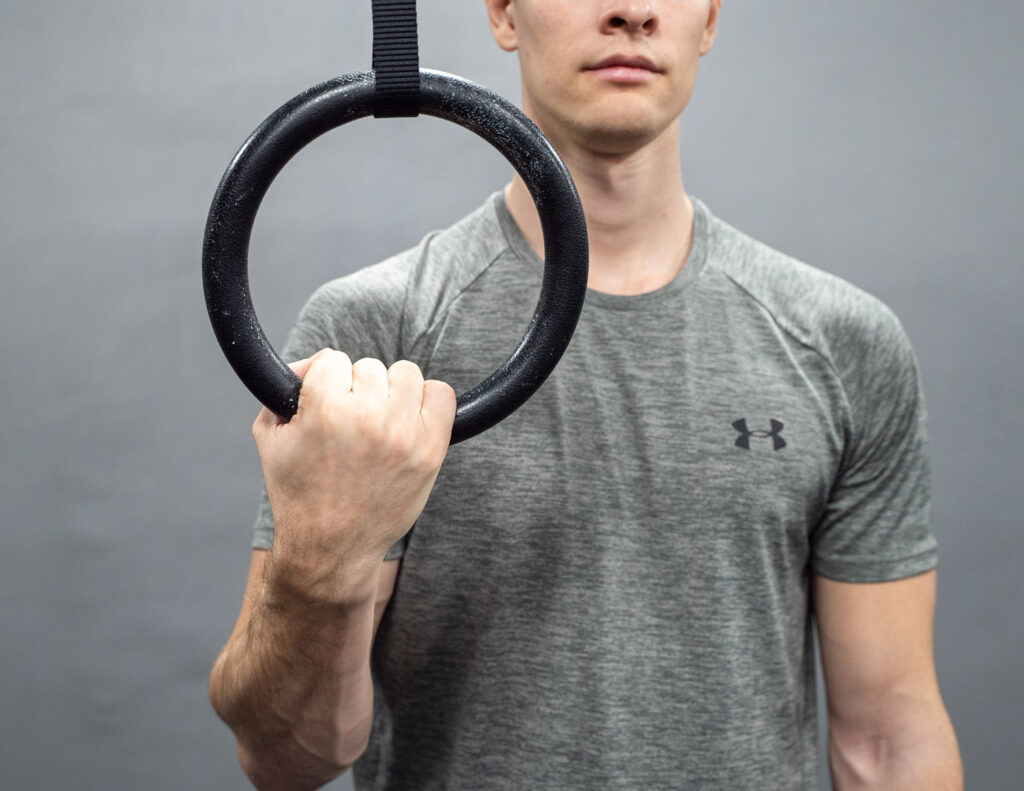
Neutral grip
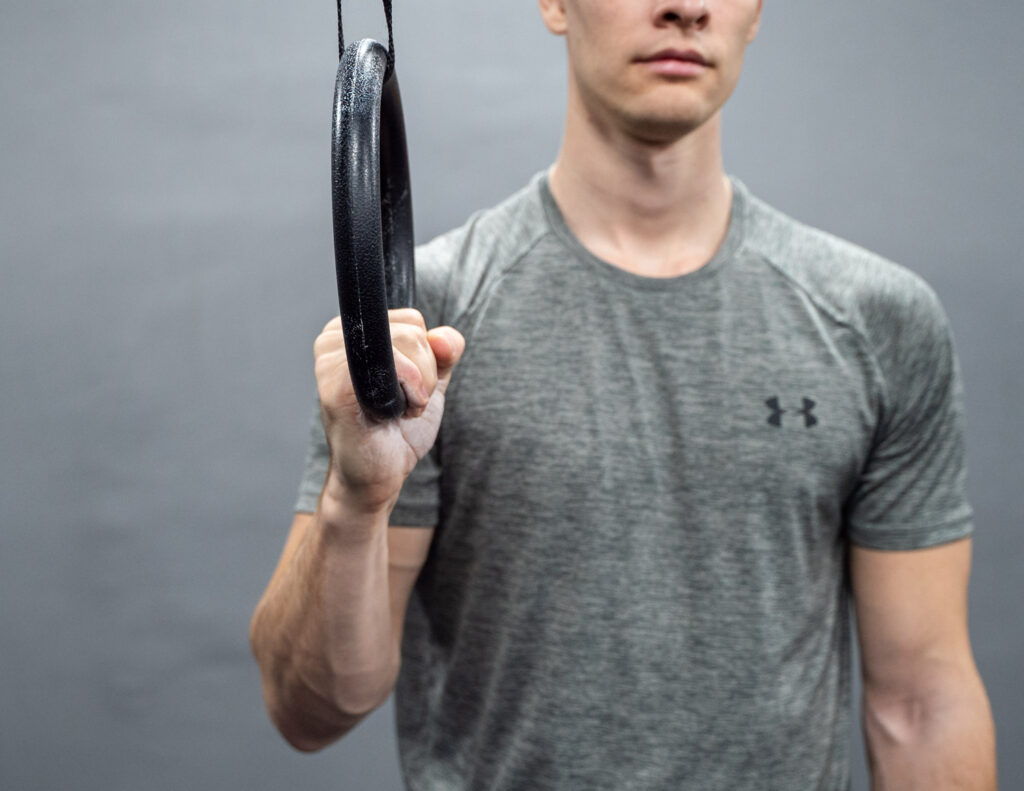
Pronated grip
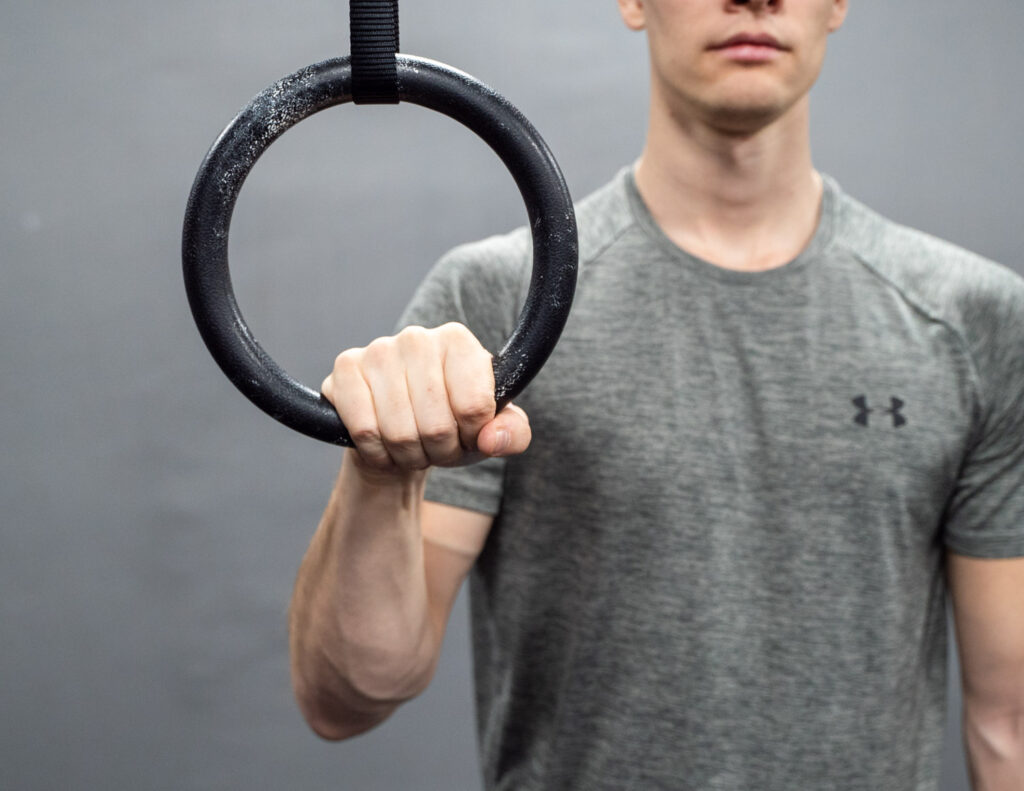
Which is easier to learn?
It's not uncommon that you learn your first chin up before you learn your first pull up. Or that you're able to pull heavier weight in chin ups that pull ups. This is usually thanks to the simple reason that both the biceps and lats are strong in the chin up. To perform the chin up with neutral grip may also be easier as both the biceps and M. Brachioradialis is strong when pulling in a neutral grip. For many, pull ups are tougher than chin ups because the back has to pull the most weight.
Chin Ups technique
1. Begin each rep by hanging with your hands shoulder-width apart in the dead hang position, with straight arms, tense torso and feet slightly in front of you.
2. Then press your shoulders and shoulder blades down your back to activate your lower trapezius and lats. The shoulders should not go up to the ears at any time during the movement.
3. Pull yourself upwards by bending your elbows and activating the Biceps together with the Lats. Hold your shoulders down and push your shoulder blades down throughout the movement.
4. Aim to get the chin above the bar without pulling from the shoulders. Press the shoulders back and down into the back. Stop at the top and slowly come down into a dead hang. That's one rep!
A common mistake is that the shoulders go up and that you lose the activation in the lats. Remember to press the shoulders down in the back as in the picture to the right and get help from the back muscles! And do the whole exercise strictly and in a controlled manner.
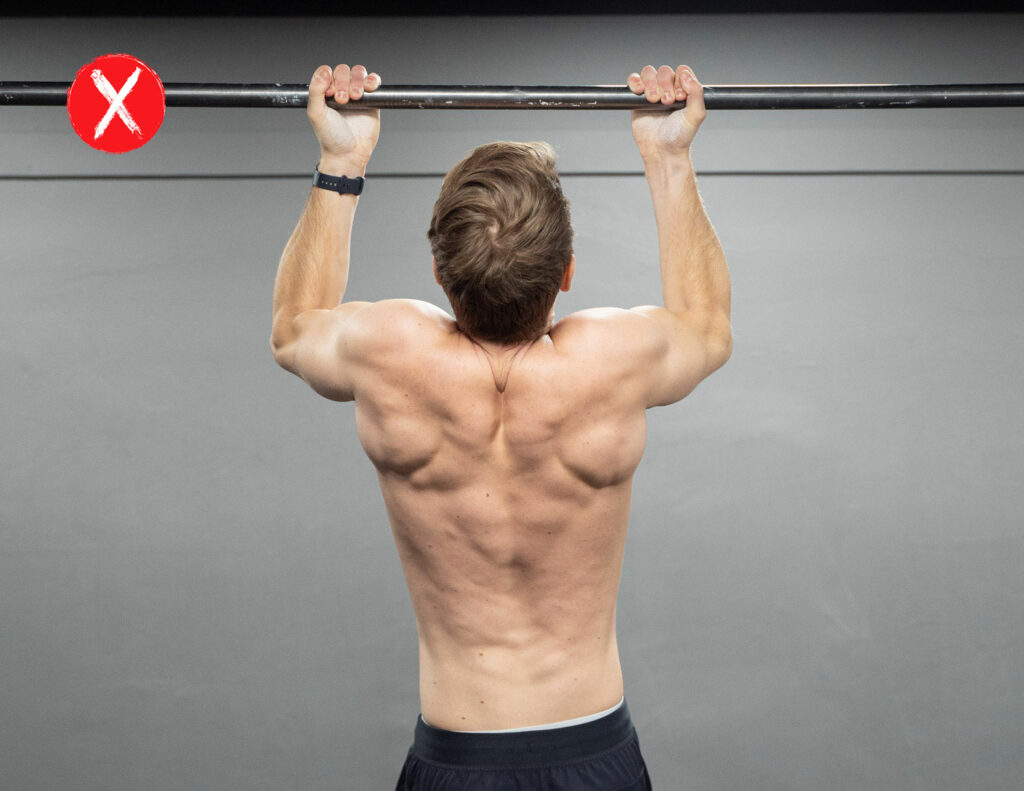
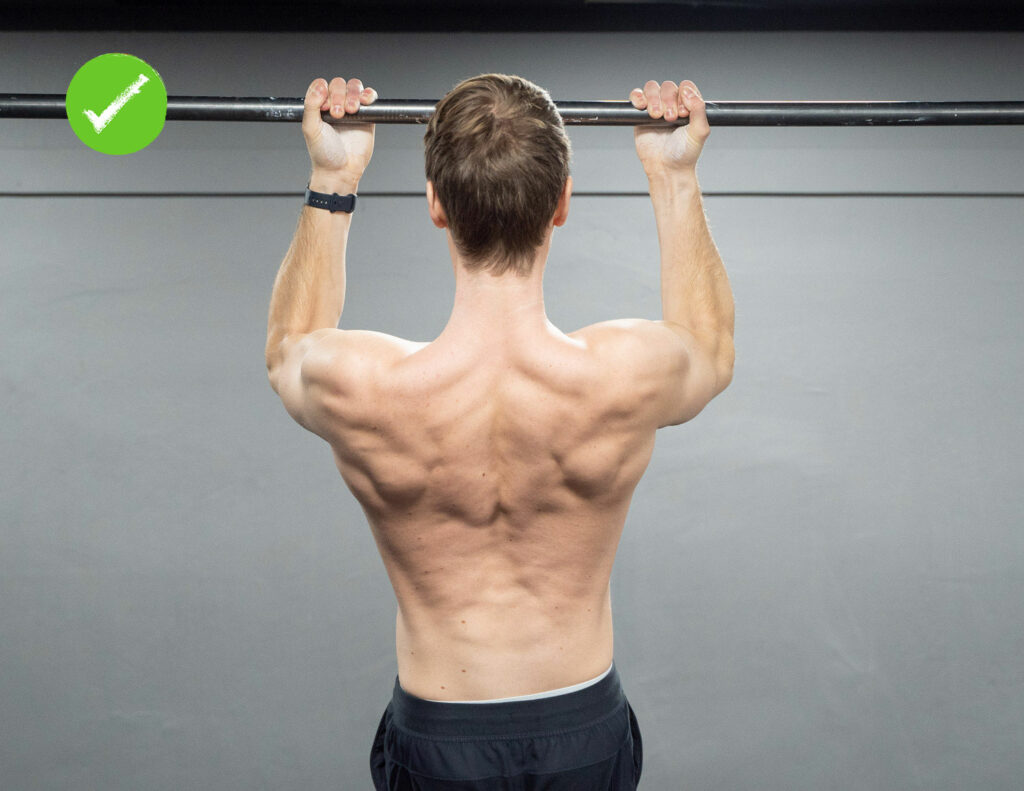
What grip should you have?
Both exercises can be performed with a close or wide grip depending on the purpose. On the other hand, it will feel more natural to have a narrower grip in chin ups and a wider grip in pull ups. If you feel discomfort in the elbow joint when doing chin ups, a tip may be to try doing them in Roman rings. Then the hands and arms can rotate with the movement, which can be more gentle on the elbow joint.Remember - perform the exercise with control
If you want to become stronger in the exercise, it is important to perform the exercise with control to be sure that you activate the right muscles. You want to train the muscle memory, which is a signal from the brain that tells the muscles what to do. Practice by making explosive in the concentric phase to go slowly down in the eccentric phase. By explosive is not meant too fast but fast enough so that you can maintain control and activate the right muscles and practice the technique.
Doing kipping chin ups with momentum will not help you learn the technique and activate the right muscles for strict chin ups. It can help you to get up several times in a short time, but can lead to high loads and injuries. If you want to get good at strict chin ups, it is better to do strict chin ups and get help from a friend or a band. You simply become good at what you practice at.
How do I learn Chin Ups?
There are many exercises to regress chin-ups. Here we need to put our ego to the side. The priority is to get the technique in and get the lats to understand that they're supposed to do the work. Remember that the exercise can be very demanding on the joints and therefore we want to successively overload the muscles.
Chin ups progressions that you can practice include rowing in rings, scapula pull ups, chin ups with bands and eccentric. If this is completely new to you, you can start getting acquainted with rowing in rings, scapula pull ups and chin ups with rubber band. If you have been training for a while, you can start practicing chin ups with a smaller band and eccentric. You can also get help from a friend who can press with his hands up on your back for a little help at the end of the movement when it is heaviest.
Chin ups (also called supine pull ups) are a really good exercise to include in your workouts! You build strength in the back, biceps and forearms while you learn to manage your own body weight. In Calisthenics, it is a basic bodyweight exercise that also makes you stronger in other pull exercises within Calisthenics.
It can feel nearly impossible to learn the chin-ups when starting out. However, with the help of various exercises and continous training it's very possible to master the exercise even if it takes some more work from some people. One thing is sure, the joy is total when you manage to perfom your first! In this blog post we will go through all you will need to know about chin-ups and how to progress further.
1. Ring Rows
A good exercise to strengthen the lats. The further you walk with your feet, the heavier the exercise. Remember to perform the exercise in a controlled manner with a tight torso and be like a plank throughout the movement. Pull yourself all the way up and all the way down to straight arms.
2. Scapula Pull Ups
A great exercise to find the activation in the lats and get the technique in the starting position. Hang in a Dead Hang with straight arms, and shoulders to the ears. Then lower your shoulders with straight arms by pushing the shoulder blades down into your back and activating the lats.
3. Assisted Chin Ups with band
Practice the whole move with the help of a rubber band. Take a sufficiently thick band that allows you to do a few reps in a row, it should not be too easy. Practice pulling with the lats and find the technique in the exercise.
4. Eccentric Chin Ups
Learn do to more Chin Ups
Are you stuck with being able to do five or more? Then try challenging yourself with weighted chin ups. Add about 1-5 kg to begin with (more if you are a regular practitioner), and try to get as many complete reps with weight as you can and then finish each set with eccentric with or without weight. You can also challenge yourself to do more repetitions each set. If you feel that it is getting too heavy, do the last ones with the help of a friend, a band or eccentric chin ups. Practice by varying the sessions between many repetitions and heavier but fewer repetitions.
Another way to learn to do more in a row is to add another day a week when you train on chin ups and also pull ups. Say that you practice once a week then you will notice a difference just by increasing the volume per week to two or maybe even three days a week. Your body will have no choice but to get stronger and learn the exercise.
How many should I do?
Whether you train with bands, with the help of a friend, do eccentric, regular or with weight, try to get in a total of 25-50 repetitions. If you are looking to get strong with the goal of achieving more strict chin ups, make sure to rest properly between each set (about 3 min). It may feel like a long time, but it gives the muscles time to recharge and can perform the next set as well as possible.
There are many different ways to set up your workout to achieve your first, more repetitions or heavier chin ups. Our tip is to ask a personal trainer for help to know exactly what and how you can train to get better at chin ups and Calisthenics.
Eager to start training to reach your goal? read more about PT or PT online here.


